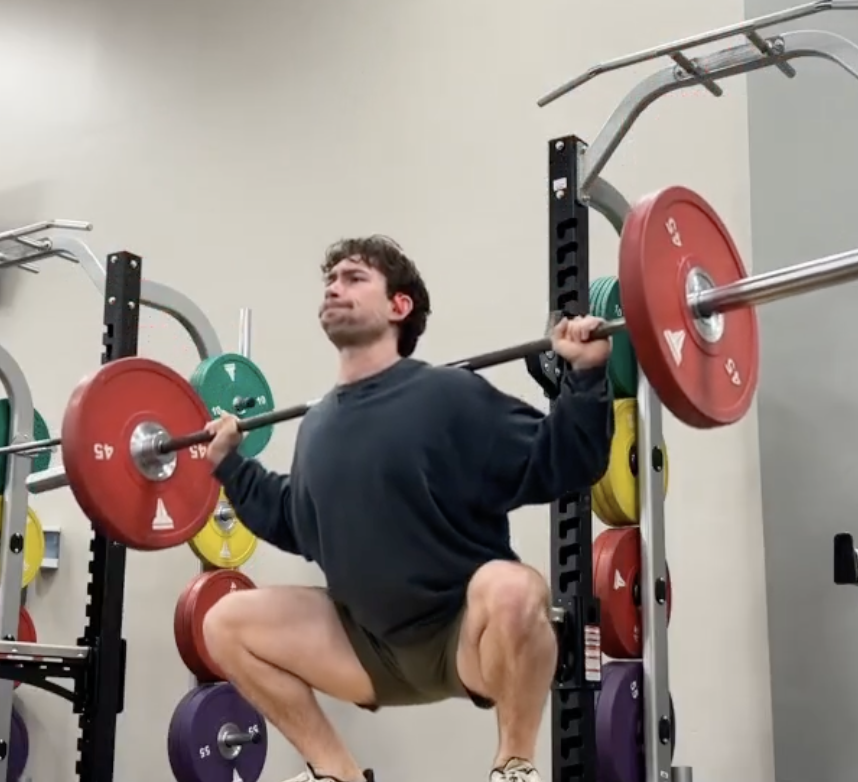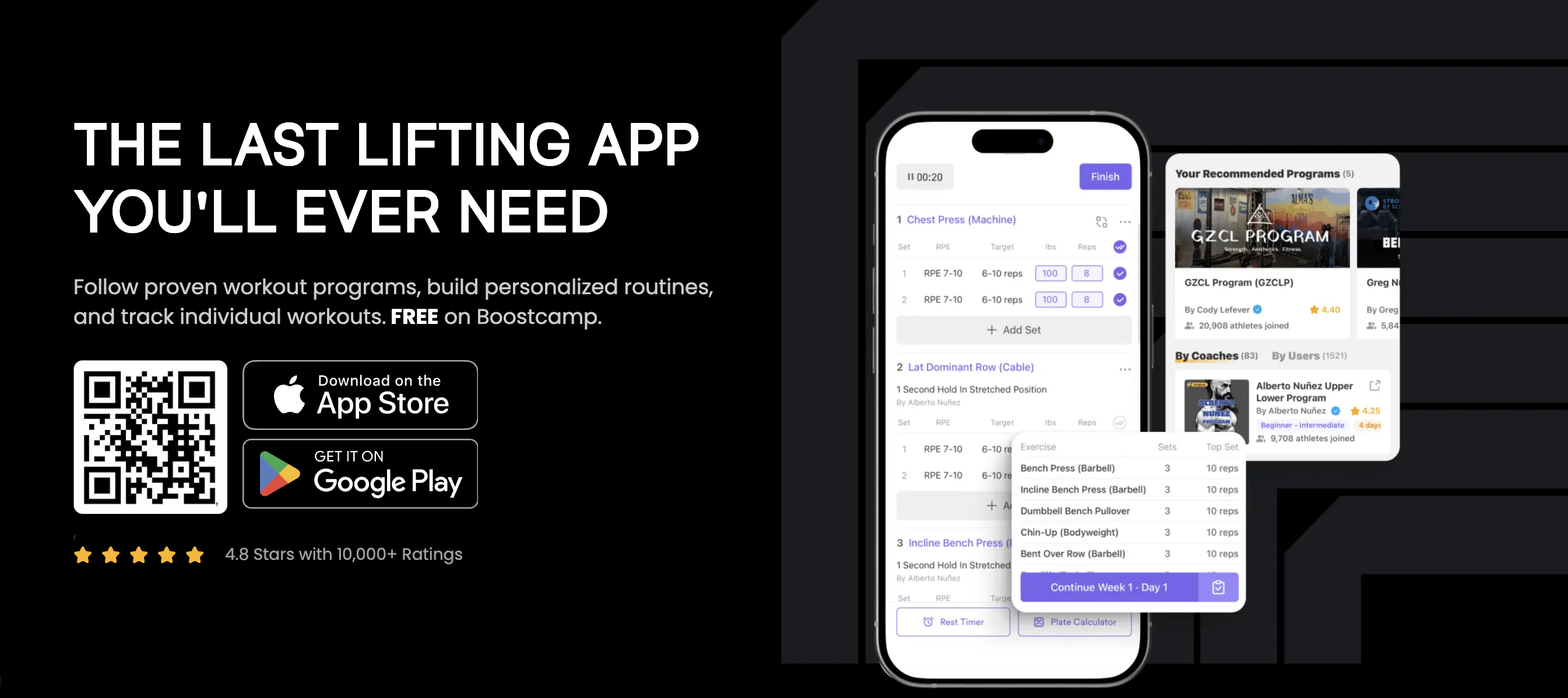The Importance of Warm Ups Before Workouts
Written by The Boostcamp Editors
Don’t go into a workout cold
If you're a fitness enthusiast or someone who's just beginning their journey into the world of weightlifting, you've probably heard the phrase "warm-up" countless times, and maybe you’ve blown it off. “Warming up” is a term that's often tossed around in gym conversations, but do you truly understand its significance? It does not mean to just warm up your body's temperature, but actually get the blood pumping to your muscles and joints. Some people just go in and load up the barbell, then immediately go into their one rep maxes, which is not the proper way to go about things. This can lead to injury, and keep you out of the gym for extended periods of time.
In this comprehensive guide, our team at Boostcamp will delve deep into the importance of warming up before lifting weights. Whether you're an experienced lifter or a novice, understanding and incorporating a proper warm-up routine into your training program can make a substantial difference in your workout performance and long-term gains.
Let’s dive in.
What is a Warm-Up in Exercise?

The first thing to address is exactly what a warm-up is before we dive into why it should be a part of your workout routine. A warm-up is a series of low-intensity exercises and movements that precede your main workout. Its primary purpose is to get your blood flowing throughout the body and prepare your body for the more strenuous physical activity that follows, whether you are training for bodybuilding or those heavy compound lifts that are the main focus of powerlifting, this is essential. Warming up is not only about literally raising your body temperature; it serves several crucial functions.
Check out what exactly a warm up does for you:
Increase in Body Temperature: One of the most apparent effects of a warm-up is an increase in body temperature, hence the name. As your body heats up, your muscles become more pliable and less prone to injuries, as they are able to take a beating and lift the weights that you want to lift.
Improved Blood Flow: Warming up enhances blood circulation to your muscles, essentially giving you a pump and helping establish a mind-muscle connection. This, in turn, delivers oxygen and essential nutrients to your muscle tissues, aiding in their performance.
Enhanced Joint Lubrication: Proper warm-up routines also help lubricate your joints, like your knees and elbows, which can make your workouts go smoothly. This reduces friction and makes your movements smoother and more efficient during your workout.
Mental Preparation: Warming up allows you to mentally prepare for your workout, putting you “in the zone”. It provides a transition from the distractions of your day to focusing on your exercise regimen.
Now that we understand the fundamental reasons for warming up, let's dive deeper into why it's especially crucial before lifting weights.
The Importance of Warming Up Before Lifting

There are numerous reasons that a warmup is important, let’s break them down.
Injury Prevention
Injuries are the last thing anyone wants when working out, as they will put you out of the gym and can lead to a lifetime of complications. For example, a bad knee injury could have you not squatting or deadlifting properly for years. A cold, unprepared, tight muscle is more susceptible to strains, tears, and other injuries that can put you out of the gym, and this will only lead to you sacrificing some gains. When you warm up, your muscles and connective tissues become more elastic, preparing them for your lift, and reducing the risk of injury. This is particularly vital when lifting heavy weights, as the added strain can lead to catastrophic injuries without proper preparation.
Enhanced Performance
Imagine trying to sprint without first jogging or walking. Your muscles would struggle, and you wouldn't perform at your best. The same principle applies to weightlifting. A proper warm-up prepares your muscles for the demands of lifting weights, allowing you to lift heavier loads and perform more reps. You wouldn’t want to max out on your bench press without going through your warm up sets, right? A proper warm up can lead to more significant gains in strength and muscle mass over time.
Improved Range of Motion
Though partial reps are appropriate in some instances, effective weightlifting mainly relies on a full range of motion. Without a full range of motion, the muscles are not being worked to their max potential and can be left underdeveloped in some areas. That being said, a cold muscle is less flexible, limiting your ability to perform exercises correctly. A warm-up, however, increases your flexibility in the muscle and in turn can increase the range of motion, ensuring that you can execute lifts with proper form. This not only reduces the risk of injury but also targets the intended muscle groups more effectively.
Mental Focus
Weightlifting requires not only physical strength but also mental concentration. Warming up provides an opportunity to clear your mind, focus on your workout goals, and mentally prepare for the challenges ahead. This mental preparation can significantly impact your lifting performance.
Consistency and Longevity
Consistency is key to achieving your fitness goals. Regularly warming up before lifting helps establish a routine and discipline in your training regimen. Additionally, it contributes to your long-term fitness journey by minimizing the risk of chronic injuries that could sideline you for extended periods.
Effective Warm-Up Strategies for Lifting
Now that we've emphasized the importance of warming up before lifting, let's explore some effective warm-up strategies you can incorporate into your routine:
Dynamic Stretching
Dynamic stretching is a warm up technique involving active movements that take your muscles and joints through their full range of motion. These can include leg swings, arm circles, hip rotations, and bodyweight squats. Dynamic stretching increases blood flow, elevates heart rate, and prepares your body for dynamic movements involved in lifting.
Foam Rolling
Foam rolling, or self-myofascial release, is a warm up technique that involves using a foam roller to apply pressure to specific muscle groups. This helps release tension, improve muscle mobility, and reduce muscle soreness. Spend a few minutes foam rolling areas that are tight or prone to discomfort.
Light Aerobic Exercise
Engaging in five to ten minutes of low-intensity aerobic exercise as a warm up, such as jogging or brisk walking, can help elevate your heart rate and increase blood flow. This is especially useful if you're transitioning from a sedentary state to your workout.
Specific Movement Patterns
Before you start lifting heavy weights, perform light sets of the exercises you plan to do. This helps activate the target muscles and reinforces the movement patterns. For example, if you're planning to squat, start with bodyweight squats or use very light weights before gradually increasing the load.
Gradual Progression
Ensure that your warm-up progressively intensifies to match the demands of your workout. Start with low-intensity movements and gradually increase the intensity as you move closer to your main lifting sets.
Where to Find a Training Program
While the warm up routine is absolutely crucial, warming up if you have a lackluster training program. Finding a good workout program to help guide you is key. Keep in mind that good programs will help with your fitness journey, you would want to find a program that caters to your needs and guides you in the right direction, making sure that you are making the most gains. If you are looking to stay on track and continue with linear progression, then finding a good workout program is the key. Where do you look for a good workout program? Check out the Boostcamp App for some great programs.
Boostcamp is home to over 50 FREE workout programs written by renowned coaches that consist of strength, hypertrophy, or functional fitness, or both, from the push pull legs program all the way to upper lower, there are so many programs to choose from that can help fit your needs. However, with Boostcamp, you don’t have to just follow a pre-written program (although each program is written by a professional), you also can create your own program as well, and track your progress to make sure you are on the right track. That being said, when you are looking to incorporate some serious training to further your progress, then check out Boostcamp.
Wrap Up
In the world of fitness and weightlifting, warming up before lifting weights is not just a suggestion; it's a necessity if you want to sustain a long term career in the gym. It's the foundation upon which safe and effective workouts are built. A proper warm-up routine can prevent injuries, improve performance, enhance your range of motion, sharpen your mental focus, and contribute to your long-term success in the gym.
Don't underestimate the importance of those initial minutes spent warming up. They can be the difference between achieving your fitness goals and encountering frustrating setbacks. So, make warming up a non-negotiable part of your workout routine, and watch as your strength, gains, and overall fitness soar to new heights.
Will you be incorporating any of these warm up techniques?
Let us know! And be sure to follow Boostcamp on Instagram and subscribe on YouTube!

Images courtesy of Instagram (@depth.vader)

